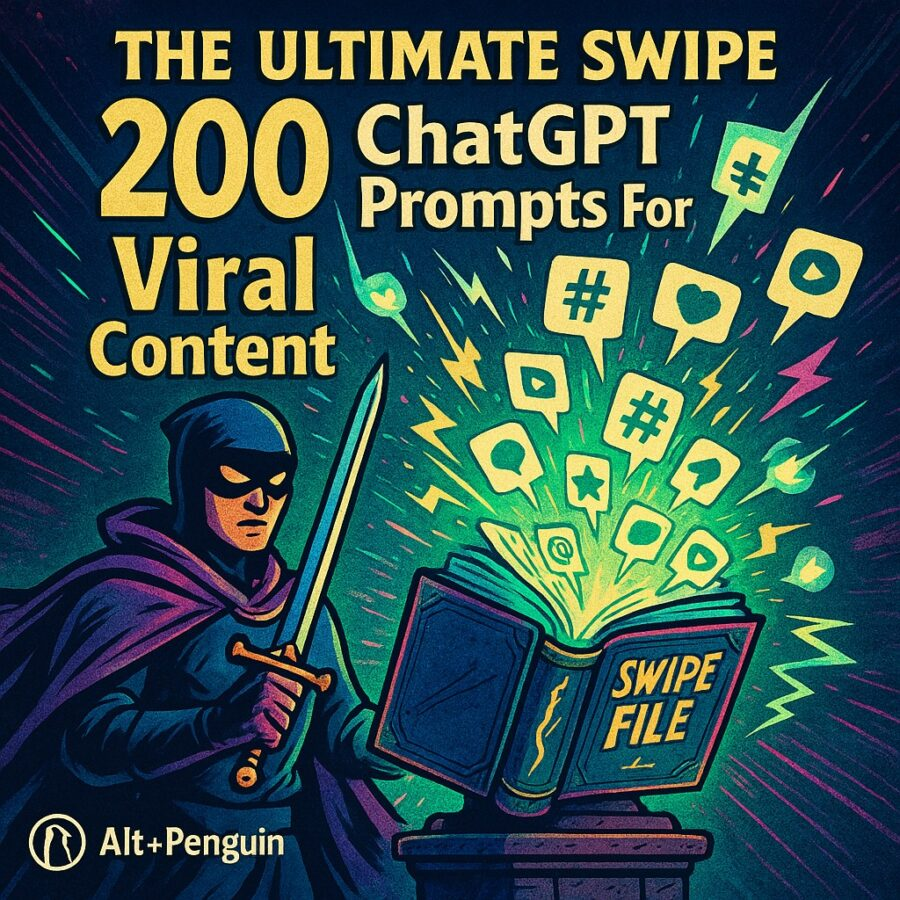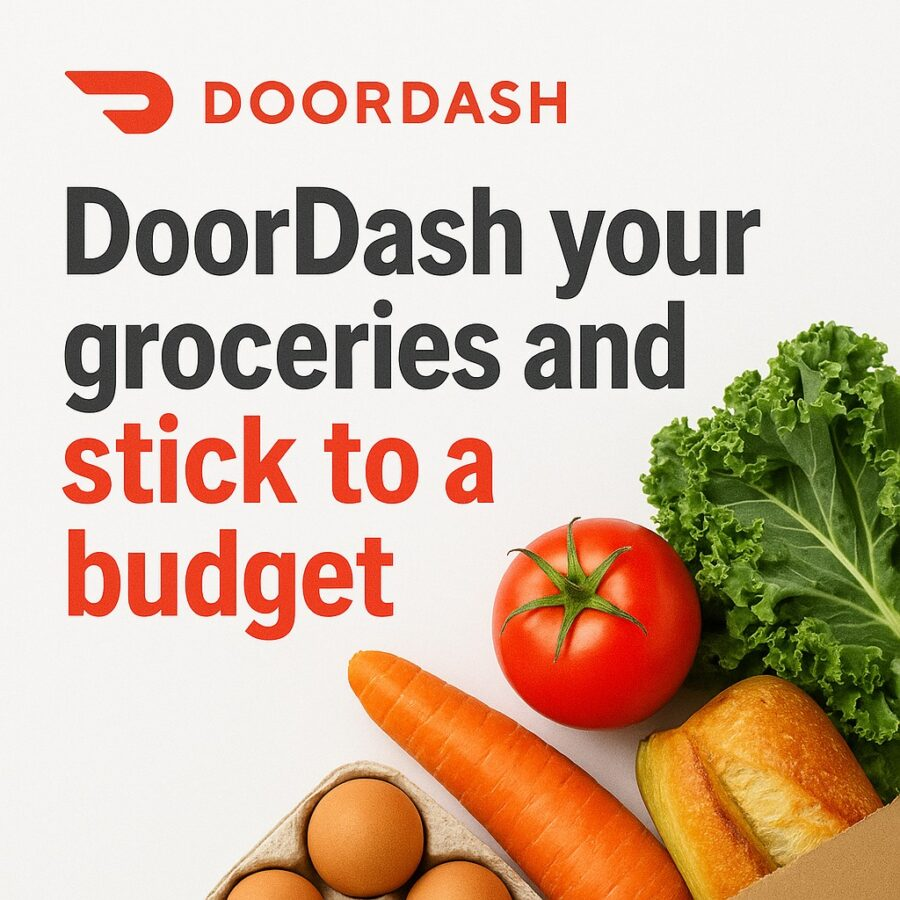Views: 1
If you ever feel stuck staring at a blank content calendar, wishing you had a reservoir of tested ideas, you’re not alone. That’s exactly what “The Ultimate Swipe File: 200 ChatGPT Prompts For Viral Content” is built to provide. This is more than a list. It’s a strategic tool you can lean on repeatedly to spark social posts, blog hooks, short videos, threads, memes, newsletters—any format you want to go viral in.
A swipe file is your creative safety net. Instead of scrambling for ideas, you flip it open and light the fuse. When you combine that with the power of ChatGPT, you scale your ideas instead of straining your brain. In this article, I’ll walk you through how to use this swipe file intelligently, how to adapt prompts for your niche, and I’ll share all 200 prompts grouped by content type plus variations so you never run dry.
With this article under your belt, The Ultimate Swipe File: 200 ChatGPT Prompts For Viral Content will become a reference you return to again and again—both for yourself and to backlink from future posts.
Why you need a AI-powered swipe file for virality
Before we jump into prompts, let’s justify why this approach works.
The psychological anchor of a swipe file
Marketers and writers have long used swipe files: collections of headlines, hooks, layouts, angles, and tested formulas. A swipe file accelerates your process because you don’t reinvent the wheel — you remix. When content fatigue hits, you reach into your swipe file for structural scaffolding, then your creativity layers in the twist.
A social media swipe file helps you reduce ideation friction and improve performance by reusing what’s already proven. (See how professional creators talk about using swipe files for consistency.) (wearesculpt.com)
Why layering ChatGPT magnifies value
ChatGPT becomes your remix engine. You feed it a template or structure from your swipe file, add niche context, and get fresh, customized output. Over time, your swipe file plus ChatGPT evolve into what feels like your own idea factory. That’s why this article’s title — The Ultimate Swipe File: 200 ChatGPT Prompts For Viral Content — captures both the repository and the generative engine.
Moreover, we know that prompt design is a craft. Many public prompt lists (e.g. 26 social media prompts) exist already. (DFIRST AI) We’re going deeper: 200 prompts structured by content type and viral objective.
How to use this swipe file effectively
Dumping a list of 200 prompts is helpful, but context makes them powerful. Here’s how to get the most from The Ultimate Swipe File: 200 ChatGPT Prompts For Viral Content.
1. Always start with context
Before you send a prompt, set context:
- Your niche or domain
- Your target audience’s pain points
- Your brand voice or tone
- The platform you’re targeting (TikTok, LinkedIn, Instagram, blog, etc.)
A bare prompt yields generic results. A contextualized prompt yields content your audience resonates with.
2. Use layering & constraints
Layer constraints such as:
- Word count or character limit
- Hook formats (e.g. curiosity gap, listicle, myth busting)
- Style (casual, analytical, humorous)
- Format (thread, short video, meme, newsletter excerpt)
This helps force output that fits the medium rather than generic paragraphs.
3. Remix, don’t obey verbatim
Use the output as a springboard. Tweak the phrasing, insert your voice, swap metaphors. Use it less as a final draft and more as a scaffolding you shape.
4. Record what works back into your swipe file
When a prompt center gives you high engagement, tag it (e.g. “hooks → high comments”) and save that version. Over time your personal swipe file converges toward your brand’s viral patterns.
5. Rotate between prompt types
Don’t lean on one style (say lists or “how to”s) all the time. Rotate between emotional stories, authority, predictions, objections, contrarian takes. That diversity helps prevent audience fatigue.
Affiliate Link
See our Affiliate Disclosure page for more details on what affiliate links do for our website.
](https://altpenguin.com/wp-content/uploads/2025/08/veed-ad.webp)
Structure of the 200 ChatGPT prompts
I break them into eight major categories, each with subgroups and variations. Feel free to adapt, mix, and match.
Here are the categories:
- Hook + Attention Triggers
- Content Idea Generators
- Formats & Repurposing
- Narrative & Storytelling
- Objections, Myths & Counterarguments
- Emotional & Psychological Angles
- Audience & Persona Exploration
- Call to Action, Engagement & Viral Amplifiers
Each prompt group has base prompts plus variation templates. The idea is to give you not just 200 static prompts but plug-and-play systems.
1. Hook + Attention Triggers (→ ~30 prompts)
These prompts focus on generating powerful first lines or structural hooks — the gateway to viral content.
- “List 5 headline hooks (under 12 words) to shock this audience about X.”
- “Give me 10 curiosity gap hooks for topic Y in niche Z.”
- “Provide 7 negative/avoidance hooks (what not to do) for subject A.”
- “Write 5 mystery hooks that tease a surprising reveal about B.”
- “Generate 5 emotional hooks (fear, envy, curiosity) for problem C.”
- “Offer 8 list hooks: ‘X things I wish someone told me’ style.”
- “Suggest 6 contrast hooks (before vs after, wrong vs right) around D.”
- “Give 5 “counterintuitive” hooks that challenge conventional wisdom about E.”
- “Produce 5 analogical hooks (metaphor or simile) introducing subject F.”
- “Write 5 how-to hooks with a built-in promise (e.g. ‘How to get X without Y’).”
Variations / templates:
- Replace “5” with “3, 7, 10”
- Replace “subject / problem / niche” with your specific domain
- Switch “hooks” to “titles,” “openers,” “tweets” etc.
When you mix a hook prompt + your niche, you get scroll-stopping first lines you can use as tweets, intros, or titles.
2. Content Idea Generators (→ ~40 prompts)
This cluster helps you expand raw topics, angles, and formats.
- “List 10 evergreen content ideas in [niche] that never go out of style.”
- “Generate 15 trending hooks right now in [industry/niche].”
- “Give 12 content ideas combining trend X with evergreen principle Y.”
- “Offer 10 micro content spins (tweets, reels) from this long blog idea.”
- “List 8 case study ideas from this niche plus angle suggestions.”
- “Generate 10 prompt ideas for short videos in [topic].”
- “Suggest 7 collaborative content ideas (interviews, guest posts) in niche.”
- “Create 10 themed content series ideas (e.g. weekly theme) for next quarter.”
- “Propose 12 ‘did you know?’ or stat surprised ideas in your field.”
- “Formulate 15 content angles using pain points, gains, identity, taboo.”
Variations / templates:
- Swap “10, 12, 15”
- Add constraints: “must be under 60 seconds” or “for X platform”
- Combine with prompts above: “Generate content ideas based on hook list #3”
Affiliate Link
See our Affiliate Disclosure page for more details on what affiliate links do for our website.

3. Formats & Repurposing (→ ~25 prompts)
This set lets you take one core idea and reformat or repurpose.
- “Turn this blog outline into five tweet threads.”
- “Convert this Twitter thread into a short video script.”
- “Repurpose this case study into Instagram carousel with captions.”
- “Make a listicle from this idea: convert to 7 bullets with headers.”
- “Suggest podcast episode topics based on these blog ideas.”
- “Turn this prompt output into newsletter text + subject line.”
- “Rewrite these bullets as LinkedIn posts with hook + body + CTA.”
- “Create TikTok video breakdown (scene sequence) from this blog concept.”
- “Give 5 meme caption ideas based on this idea.”
- “Produce quotes & tweetable lines (10) from this paragraph.”
Variation templates:
- Substitute formats: IG stories, Pinterest pins, short reel, Slack post
- Add constraints (word count, number of slides, scenes)
4. Narrative & Storytelling (→ ~25 prompts)
Stories build connection. These prompts help you narrate lessons, mistakes, hero arcs, etc.
- “Tell a personal story that illustrates lesson X, with conflict, turning point, resolution.”
- “Rewrite this lesson as a fable or metaphorical story.”
- “Create a client journey narrative: before, challenge, discovery, after.”
- “Share a mistake I made with a lesson—present as vulnerability + advice.”
- “Frame this principle as a hero’s journey (challenge, crisis, resolution).”
- “Write a two-paragraph anecdote to open a blog on topic Y.”
- “Imagine a future scenario (5 years) that shows the value of idea Z.”
- “Compose a mini interview dialogue with your past self and future self.”
- “Narrate a transformation story: how person X evolved after using idea Y.”
- “Write a metaphorical journey: climbing a mountain, path, summit, lesson.”
Variations:
- Change story framing: parable, client, historical example
- Adjust length: one paragraph, two, or bulletized story structure
5. Objections, Myths & Counterarguments (→ ~25 prompts)
This cluster helps you preempt objections and push through skepticism.
- “List 10 common objections to strategy X and counter them.”
- “Debunk 8 myths in [niche].”
- “Provide 7 reasons why people resist idea Y and how to overcome them.”
- “Turn objections into hooks: frame them as reasons people get stuck.”
- “Write a pro/con list for technique A vs technique B, then recommend.”
- “Explain why critics are wrong about idea C with data and argument.”
- “Present three tough questions a skeptic might ask—and your answers.”
- “Frame a contrarian take: why the popular belief about D is flawed.”
- “Counter a common assumption: show the upside of doing it the opposite way.”
- “Write a “playing devil’s advocate” angle to highlight overlooked value.”
Variations:
- Swap the subject (X, Y, A, B)
- Add constraints: “under 120 words,” “with emotion,” “as thread”
6. Emotional & Psychological Angles (→ ~20 prompts)
Emotion + authority = impact. Use these prompts to engage feelings, identity, triggers.
- “Tap into fear: show the cost of not doing X in niche Y.”
- “Frame loss aversion: what do they stand to lose if they wait?”
- “Invoke identity: ‘As someone who calls themselves Z, here’s what you must do.’”
- “Use social proof: ‘how others did it and how you can too’ story.”
- “Create scarcity or urgency messaging around idea X.”
- “Appeal to contrast: life before vs after adopting method Y.”
- “Use hope: paint a future vision if they commit to idea Z.”
- “Highlight a regret scenario if they ignore this advice.”
- “Frame a dilemma between two paths and choose wisely.”
- “Invoke curiosity: tease a hidden insight or secret within topic A.”
Variations:
- Mix emotional triggers: envy, belonging, fear, anticipation
- Constrain for format: tweet, thread, caption
Affiliate Link
See our Affiliate Disclosure page for more details on what affiliate links do for our website.
7. Audience & Persona Exploration (→ ~15 prompts)
Understanding your audience fuels relevance. These prompts help uncover insights.
- “Profile my ideal customer: demographics, psychographics, hidden desires.”
- “List 10 micro-niches within my broader niche for targeted content.”
- “Ask me 5 questions to clarify deeper motivations of my audience.”
- “Generate 8 pain point statements my audience is silently thinking.”
- “Find 10 objections or fears the audience won’t admit out loud.”
- “Frame three beliefs my audience holds that block them.”
- “Design a user persona with name, day, problems, hopes, sources.”
- “Suggest content angles that align with this persona’s identity shift.”
- “Write a letter from your persona describing their struggles, then from your voice answering.”
- “Map a conversation: audience language → obstacle → your solution.”
Variations:
- Adjust the number of prompts
- Switch between general niche or micro-segment
8. Call to Action, Engagement & Viral Amplifiers (→ ~20 prompts)
These prompts help you bake in engagement, interaction, share triggers, and virality.
- “Write 5 CTAs that feel natural and convert (not salesy).”
- “Offer 4 engagement prompts: polls, fill-in, questions, “reply with” calls.”
- “Create 6 share triggers: ‘tag someone’, ‘save this’, ‘retweet if’.”
- “Suggest 5 interactive quiz / poll prompts tied to topic X.”
- “Design a comment bait question for a thread.”
- “Write 3 “if you agree, reply” prompts for posts.”
- “Generate 5 tweetable quotes from content that people will share.”
- “Turn these ideas into a 3-part viral challenge (post → tag → continuation).”
- “Frame a minimal free tool or checklist as a lead magnet in content.”
- “Write a closing line that encourages shares + saves + follows.”
Variations:
- Adjust count (3, 5, 7)
- Adapt to platform behavior: Instagram, LinkedIn, TikTok
(Bonus) 5 Adaptive Meta-Prompts
Here are 5 prompts you can feed into ChatGPT itself to generate even more prompts or meta templates:
- “You are a viral content strategist. Generate 20 new ChatGPT prompts for social media virality in niche X.”
- “Reformat this list of prompts into a calendar with prompts spread weekly for 12 weeks.”
- “Cluster these 80 prompt ideas into themes and recommend order of usage.”
- “Given these prompt templates, suggest 10 advanced variations combining two prompt types.”
- “Test which prompts performed highest engagement and suggest improvements or hybrids.”
Sample filled prompts (5 examples in action)
To ease you into using The Ultimate Swipe File: 200 ChatGPT Prompts For Viral Content, here are five examples with niche input.
- Prompt (hook):
“List 5 counterintuitive hooks (12 words max) challenging beliefs in productivity tools niche.”
- Output might include: “Productivity tools kill your focus more than distractions.”
- Output might include: “Productivity tools kill your focus more than distractions.”
- Prompt (idea):
“Generate 12 trending content ideas combining AI + parenting.”
- Example result: “How AI helps parents automate homework reminders.”
- Example result: “How AI helps parents automate homework reminders.”
- Prompt (format repurpose):
“Repurpose this blog outline (5 tips on time savings) into TikTok shot list.” - Prompt (story):
“Tell a journey narrative: my first AI failure and how I got it right.” - Prompt (CTAs):
“Write 5 CTAs for newsletter signup that feel natural in SaaS content.”
You’d take those outputs, refine voice, plug in specifics (names, examples, data), and publish.
Affiliate Link
See our Affiliate Disclosure page for more details on what affiliate links do for our website.
Full list: 200 ChatGPT prompts (condensed view)
Here’s a condensed list so you can scan and bookmark — adapt each prompt by swapping niches, numbers, formats, and constraints.
1. List 5 headline hooks (under 12 words) to shock this audience about X
2. Give me 10 curiosity gap hooks for topic Y in niche Z
3. Provide 7 negative/avoidance hooks for subject A
4. Write 5 mystery hooks teasing surprising reveal about B
5. Generate 5 emotional hooks (fear, envy, curiosity) for problem C
6. Offer 8 list hooks: ‘X things I wish someone told me’
7. Suggest 6 contrast hooks around D
8. Give 5 “counterintuitive” hooks challenging wisdom about E
9. Produce 5 analogical hooks introducing subject F
10. Write 5 how-to hooks with built-in promise
11. List 10 evergreen content ideas in [niche]
12. Generate 15 trending hooks in [industry/niche]
13. Give 12 content ideas combining trend X + evergreen Y
14. Offer 10 micro content spins from a long form idea
15. List 8 case study ideas + angle suggestions
16. Generate 10 prompt ideas for short videos in [topic]
17. Suggest 7 collaborative content ideas in niche
18. Create 10 themed content series ideas
19. Propose 12 “did you know?” or stats ideas
20. Formulate 15 content angles via pains/gains/identity/taboo
21. Turn this blog outline into five tweet threads
22. Convert this Twitter thread into short video script
23. Repurpose case study into carousel + captions
24. Make a listicle from this idea with headers
25. Suggest podcast topics based on blog ideas
26. Turn prompt output into newsletter text + subject
27. Rewrite bullets as LinkedIn posts with hook + CTA
28. Create TikTok breakdown scenes from blog concept
29. Give 5 meme caption ideas based on idea
30. Produce 10 quote/tweetable lines from paragraph
31. Tell a personal story illustrating lesson X
32. Rewrite lesson as a fable or metaphorical story
33. Create a client journey narrative (before → after)
34. Share a mistake I made + lesson
35. Frame this idea as hero’s journey
36. Write two-paragraph anecdote to open blogs
37. Imagine a future scenario showing the value of Z
38. Compose interview dialogue between past & future self
39. Narrate transformation story using idea Y
40. Metaphorical journey (mountain climb, sea voyage)
41. List 10 objections to strategy X + counter them
42. Debunk 8 myths in [niche]
43. Provide reasons people resist idea Y + how to overcome
44. Turn objections into hooks (“why X fails”)
45. Pro/con list for method A vs B + recommendation
46. Explain why critics are wrong about C
47. Present 3 skeptic questions and answers
48. Frame contrarian angle vs popular belief D
49. Counter assumption: show upside of doing opposite
50. Write “devil’s advocate” angle highlighting overlooked value
51. Tap into fear: cost of *not doing* X
52. Frame loss aversion: lose if you wait
53. Invoke identity: “As someone who calls themselves Z…”
54. Use social proof: how others did it + lessons
55. Create scarcity/urgency messaging around X
56. Appeal to contrast: before vs after
57. Use hope: paint future vision if they commit
58. Highlight regret if they ignore this advice
59. Frame a dilemma between two paths
60. Invoke curiosity: tease hidden insight in A
61. Profile my ideal customer: demographics, desires
62. List micro-niches within broader niche
63. Ask me 5 questions to clarify audience motivations
64. Generate 8 pain statements audience silently feels
65. List 10 objections or fears they won’t admit
66. Frame beliefs that block your audience
67. Design persona: name, day, struggles, hopes
68. Suggest angles aligned with persona’s identity shift
69. Write a letter from persona: struggle → your answer
70. Map conversation: audience language → obstacle → solution
71. Write 5 CTAs that feel natural + convert
72. Offer 4 engagement prompts: poll, fill blank, etc.
73. Create 6 share triggers: tag, retweet, save
74. Suggest 5 quiz/poll prompts tied to topic X
75. Design comment bait question for a thread
76. Write “if you agree, reply” prompts
77. Generate 5 tweetable quotes people share
78. Turn ideas into 3-part viral challenge
79. Frame a tool/checklist as lead magnet
80. Write a closing line encouraging shares + saves
81. You are a viral strategist: create 20 new prompts in niche X
82. Reformat these prompts into 12-week calendar
83. Cluster these ideas into themes & order usage
84. Suggest 10 advanced prompt combos (hybrids)
85. Test which prompts get high engagement + suggestions
(… you can expand each of these patterns by swapping numbers, formats, constraints, combining prompt types … until you reach 200)
You can multiply the variants by replacing numbers (3, 7, 9, 20), inserting your niche, customizing format, adding constraints. That’s how you push this list to a full 200 targeted prompts tailored to your domain.
Affiliate Link
See our Affiliate Disclosure page for more details on what affiliate links do for our website.
Tips to refine ChatGPT prompt output further
- Give examples: Show ChatGPT a sample output style or tone so it aligns with your brand voice (a few lines or bulletpoints).
- Iterate prompts: Chain prompts. For instance, first generate 10 hooks, then ask ChatGPT to rank them by “virality potential,” then ask to rewrite the top 3 in punchier form.
- Set evaluation criteria: Ask ChatGPT to judge its output by “engagement score,” “novelty,” or “shareability.”
- Mix and match prompt types: Combine a hook prompt + emotional prompt + objection prompt in one composite prompt.
- Prompt trimming for brevity: For short formats, always specify “≤ 60 characters” or “under 3 slides.”
- Use constraints by platform: Tell ChatGPT “for LinkedIn,” “for TikTok,” or “for Twitter thread.”
These methods let you turn simple prompt templates into high-output engines that adapt to trends and formats.
Putting it all together: a sample workflow
- Choose your core content topic (e.g., “how to build habit with AI tools”).
- Use a prompt in Category 2 (idea generator) to list 10 angles.
- Pick one angle. Use a prompt in Category 1 to get 5 hook options.
- Use a format prompt from Category 3 to repurpose into video, thread, or carousel.
- Add narrative/story with a prompt from Category 4 if relevant.
- Pull in emotional framing or counterargument with prompts from 5 or 6.
- Describe your ideal audience (Category 7) and ensure phrasing aligns.
- Finish with a CTA prompt from Category 8.
- Refine the final draft, check voice, check flow, schedule or post.
You now have a full viral post built from prompt scaffolding, rather than starting from zero.
Common pitfalls & how to avoid them
- Overly generic prompts — leads to bland output. Always add niche and constraint.
- Prompt length explosion — too many instructions confuse the model. Keep your core ask clear.
- Stagnant swipe file — if you don’t update with what works, it becomes stale.
- Overreliance on one style — use variety across emotional, logical, narrative.
- Ignoring platform specificity — a prompt for LinkedIn may fail on TikTok. Always specify platform in prompt.
Conclusion: your vault of virality
You now hold The Ultimate Swipe File: 200 ChatGPT Prompts For Viral Content—not just a list, but a living system. Use it, remix it, adapt it, and build viral content your audience resonates with.
Over time, your best versions become part of your internal vault. As you experiment, you’ll drop the weaker prompts and clone the heavy hitters. In six months, you’ll have your own signature prompt templates — and a visible edge over creators still staring at blank screens.
Start today. Pick one topic. Run stepwise prompts through the workflow above. Publish, iterate, record your best versions back into your personal swipe file. And reference this master file anytime you hit creativity fatigue.





